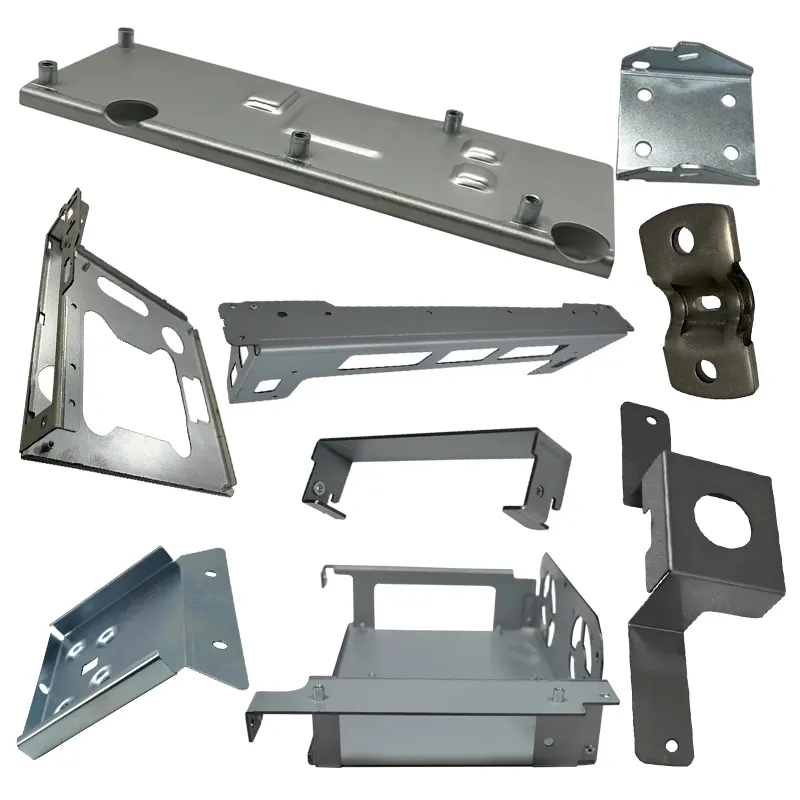In the rapidly advancing world of electronics, performance depends not only on the internal components but also on the housing that protects and supports them. A Custom Metal Enclosure provides far more than a simple covering; it acts as a shield, a heat manager, a structural frame, and a design feature. By adopting a Custom Metal Enclosure, manufacturers ensure that electronics are protected against environmental hazards, mechanical stress, and electromagnetic interference. These enclosures also offer the adaptability to integrate mounting features, cooling systems, and branding elements that elevate the product both technically and aesthetically.
The importance of a Custom Metal Enclosure is highlighted in industries where reliability is essential, such as aerospace, telecommunications, medical equipment, and industrial automation. Instead of relying on generic solutions, engineers and OEMs turn to custom fabrication to achieve enclosures that are precisely aligned with the operational and regulatory needs of their devices.
A Custom Metal Enclosure can be manufactured from stainless steel, aluminum alloys, cold-rolled steel, or brass. Stainless steel enclosures provide excellent corrosion resistance and structural durability, making them suitable for outdoor and industrial environments. Aluminum enclosures are lightweight and offer great machinability, ideal for portable devices or systems where weight reduction is essential. Brass or copper enclosures may be applied where conductivity and shielding are critical. Choosing the right material ensures that the Custom Metal Enclosure aligns with the functional and environmental challenges of the device.
Precise thickness selection and adherence to tolerance standards are essential to ensure reliability and manufacturability. A Custom Metal Enclosure can be optimized for weight, rigidity, and assembly by carefully setting parameters such as sheet thickness, bend radius, and angular tolerance.
Material |
Thickness Range (mm) |
Minimum Bend Radius |
Linear Tolerance |
Angular Tolerance |
Stainless Steel 304 |
0.5–5.0 |
1.5–3 × thickness |
±0.05–0.2 mm |
±0.5° |
Aluminum 6061-T6 |
0.8–6.0 |
2–4 × thickness |
±0.08–0.25 mm |
±0.5–1° |
Cold-Rolled Steel |
0.6–4.0 |
2–3 × thickness |
±0.1–0.3 mm |
±0.5° |
Copper / Brass |
0.5–3.0 |
2–4 × thickness |
Slightly wider |
±1° |
These parameters show how each Custom Metal Enclosure must be tailored according to performance needs, manufacturability, and operational stress factors.
Electronics generate heat during continuous operation, and poor thermal management can shorten component lifespan or cause failure. A Custom Metal Enclosure can be designed with perforations, louvers, or integrated cooling systems to optimize heat dissipation. By incorporating thermal considerations into the design, manufacturers ensure that their devices operate efficiently under demanding conditions. Materials such as aluminum also assist in conducting heat away from sensitive circuits.
Electromagnetic interference (EMI) and radio frequency interference (RFI) can compromise the performance of sensitive devices. A Custom Metal Enclosure provides natural shielding due to its conductive properties. Engineers can enhance shielding further by designing continuous seams, incorporating conductive gaskets, and ensuring reliable grounding points. These features are crucial in environments such as data centers, hospitals, and aerospace systems, where signal integrity and compliance with standards are essential.

In medical applications, hygiene, durability, and precision are priorities. A Custom Metal Enclosure can be fabricated with smooth finishes that are easy to sterilize and resistant to corrosion. Devices like diagnostic instruments, imaging machines, and laboratory analyzers rely on enclosures that safeguard sensitive electronics while maintaining a professional and hygienic appearance. Stainless steel enclosures are particularly valued for their resistance to bacteria and ease of cleaning.
Telecommunication equipment often operates outdoors or in remote areas, where weather resistance and reliability are critical. A Custom Metal Enclosure ensures protection against dust, moisture, and temperature extremes. By integrating sealing systems, cable management features, and EMI shielding, these enclosures maintain the performance of networking systems and communication infrastructure, ensuring uninterrupted connectivity.
A Custom Metal Enclosure can incorporate hinges, locks, mounting holes, and brackets directly into the design. This integration reduces the need for additional parts and simplifies assembly. Accessibility features, such as removable panels or sliding doors, enable easier maintenance and upgrades, which is particularly important for systems that require frequent service or monitoring.
Electronics are not only evaluated for performance but also for their appearance. A Custom Metal Enclosure can be finished with brushed, anodized, or powder-coated surfaces that enhance durability and provide a professional look. Branding elements such as logos or design motifs can be integrated into the enclosure, making it part of the product identity. This elevates customer perception while maintaining functional reliability.
Developing a Custom Metal Enclosure typically begins with prototyping. Prototypes allow for testing of dimensions, fit, tolerance, and performance under simulated operating conditions. This step ensures that design flaws are identified and corrected before mass production. Prototyping reduces risks and improves the reliability of the final product.
Quality assurance is crucial for ensuring that every Custom Metal Enclosure meets strict standards. Inspection processes such as coordinate measuring machine (CMM) checks confirm tolerances. Environmental and EMI testing ensures compliance with regulations. Manufacturers apply rigorous inspection protocols to guarantee consistency, reliability, and performance across production runs.
While a Custom Metal Enclosure may involve higher initial investment compared to generic options, it provides significant long-term value. Durability, corrosion resistance, and improved protection reduce the need for replacements and repairs. This reliability lowers operational costs and strengthens user confidence in the product.
By preventing overheating, EMI issues, and environmental damage, a Custom Metal Enclosure minimizes device downtime. For industries where reliability is mission-critical, such as aerospace or healthcare, this reduction in downtime directly translates into financial savings and improved service delivery.
Working with skilled fabrication specialists ensures that the design of a Custom Metal Enclosure meets both performance requirements and manufacturability constraints. Expert partners provide input on material selection, tolerances, and cost optimization. This collaboration helps achieve high-quality results while controlling expenses.
Providing accurate CAD models, drawings, and technical specifications is essential for successful fabrication. These details guide manufacturers in achieving the precise dimensions, finishes, and performance features required. Clear communication between designers and fabricators ensures that the Custom Metal Enclosure meets its intended function and complies with industry standards.
A Custom Metal Enclosure provides tailored protection and performance, ensuring that devices are shielded from heat, mechanical stress, and electromagnetic interference. It enhances reliability and extends the lifespan of electronics compared to generic enclosures.
Stainless steel and aluminum are the most common. Stainless steel is highly durable and corrosion-resistant, while aluminum is lightweight and offers excellent machinability. The choice depends on the application environment and performance needs.
By integrating vents, perforations, or cooling systems into the design, the enclosure dissipates heat more effectively. Material properties such as aluminum’s conductivity also contribute to better heat distribution, preventing overheating of electronic components.
Yes, because their durability and reliability reduce maintenance, downtime, and replacement costs. Although the initial investment is higher, Custom Metal Enclosures provide significant savings and value over the lifecycle of the device.


Copyright © 2024 by Xiamen Tongchengjianhui Industry & Trade Co., Ltd. - Privacy policy